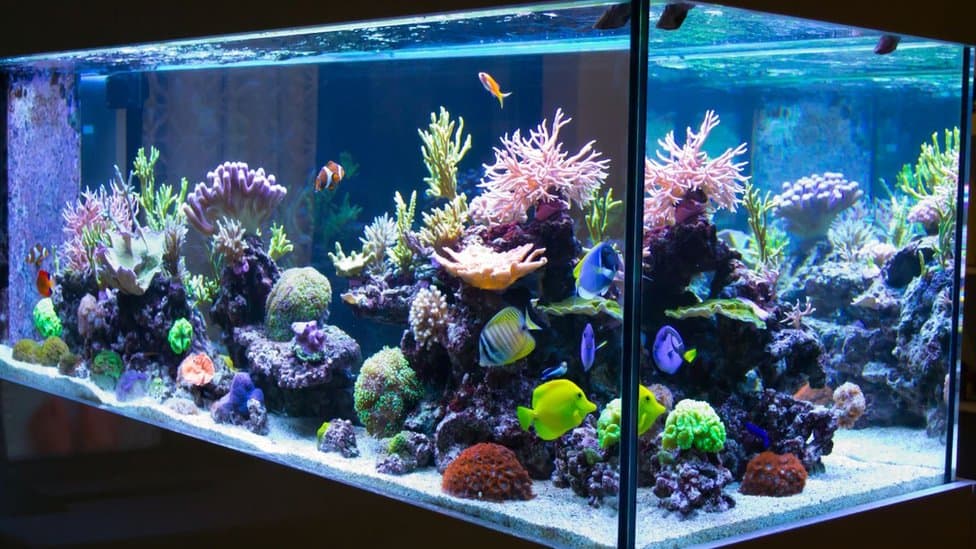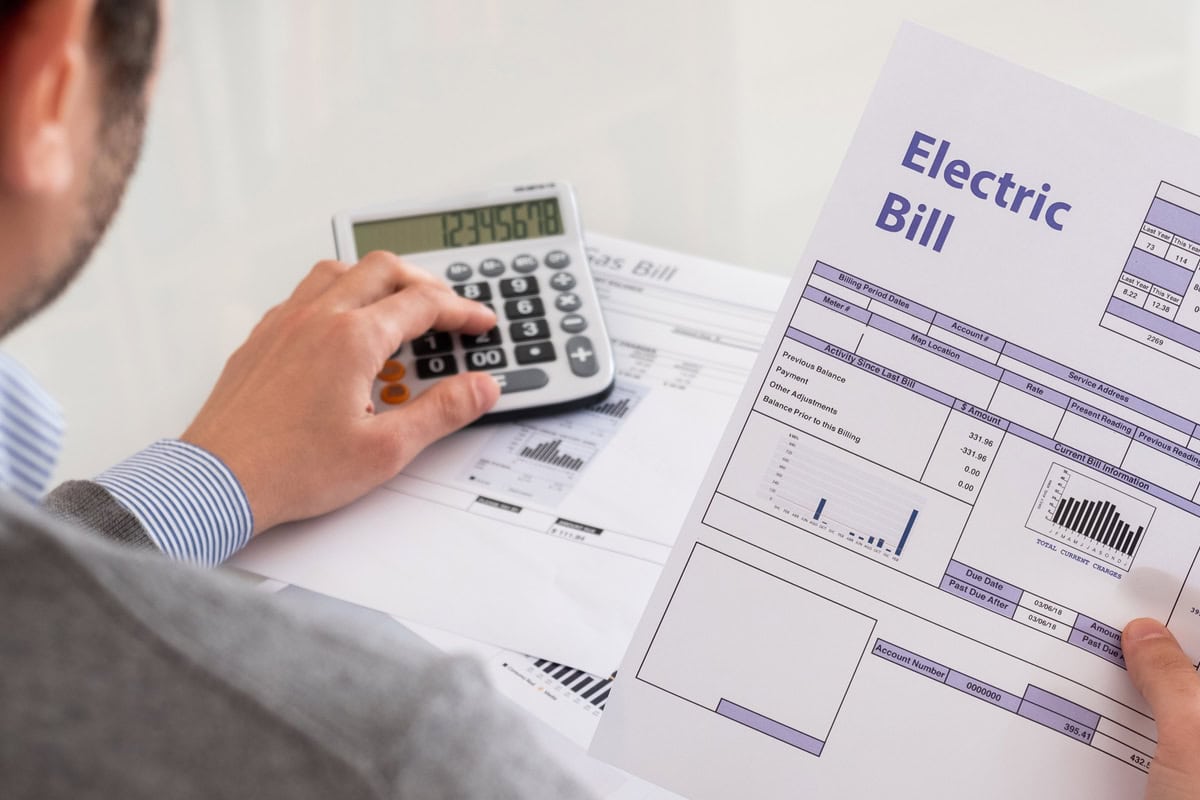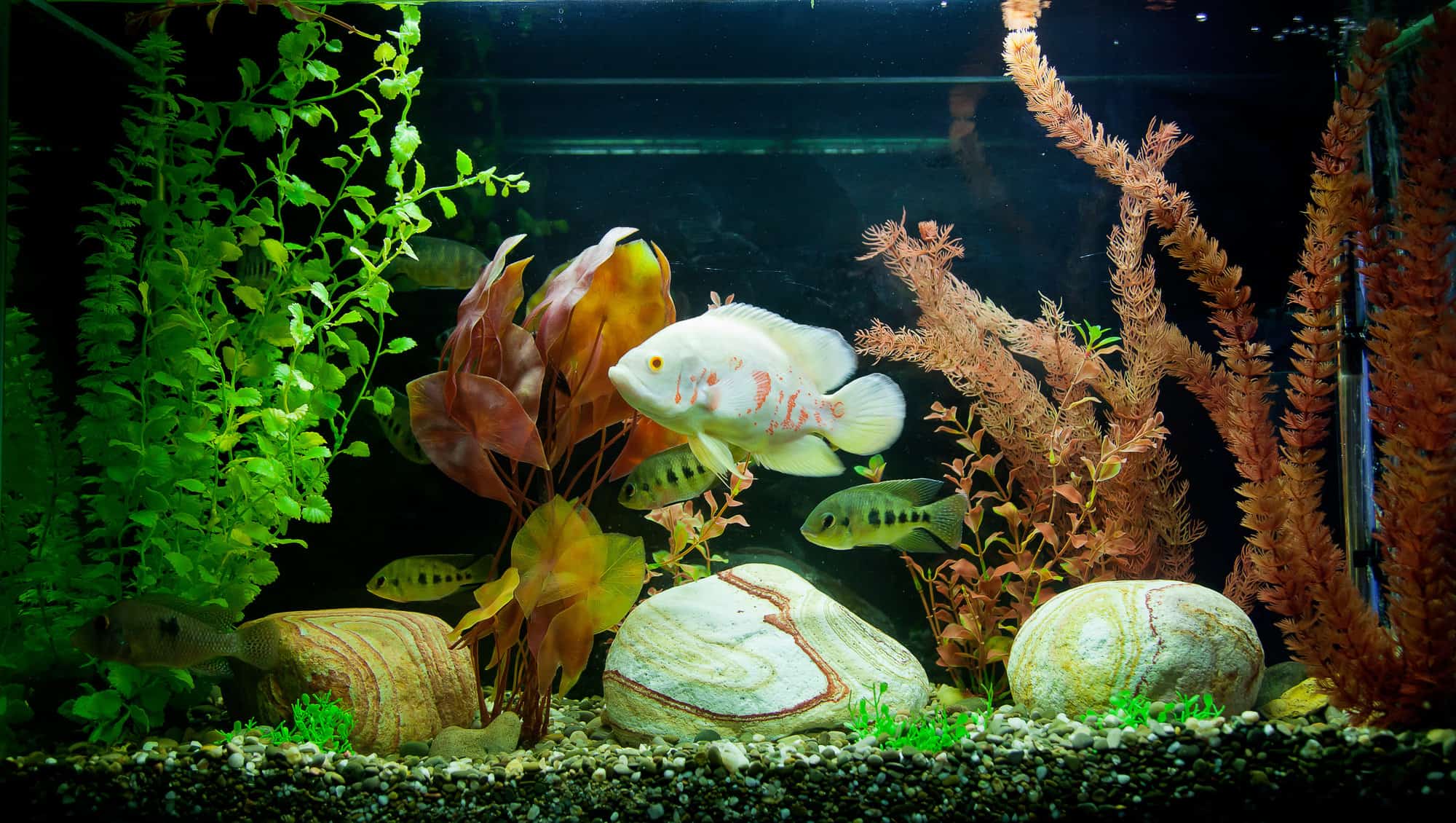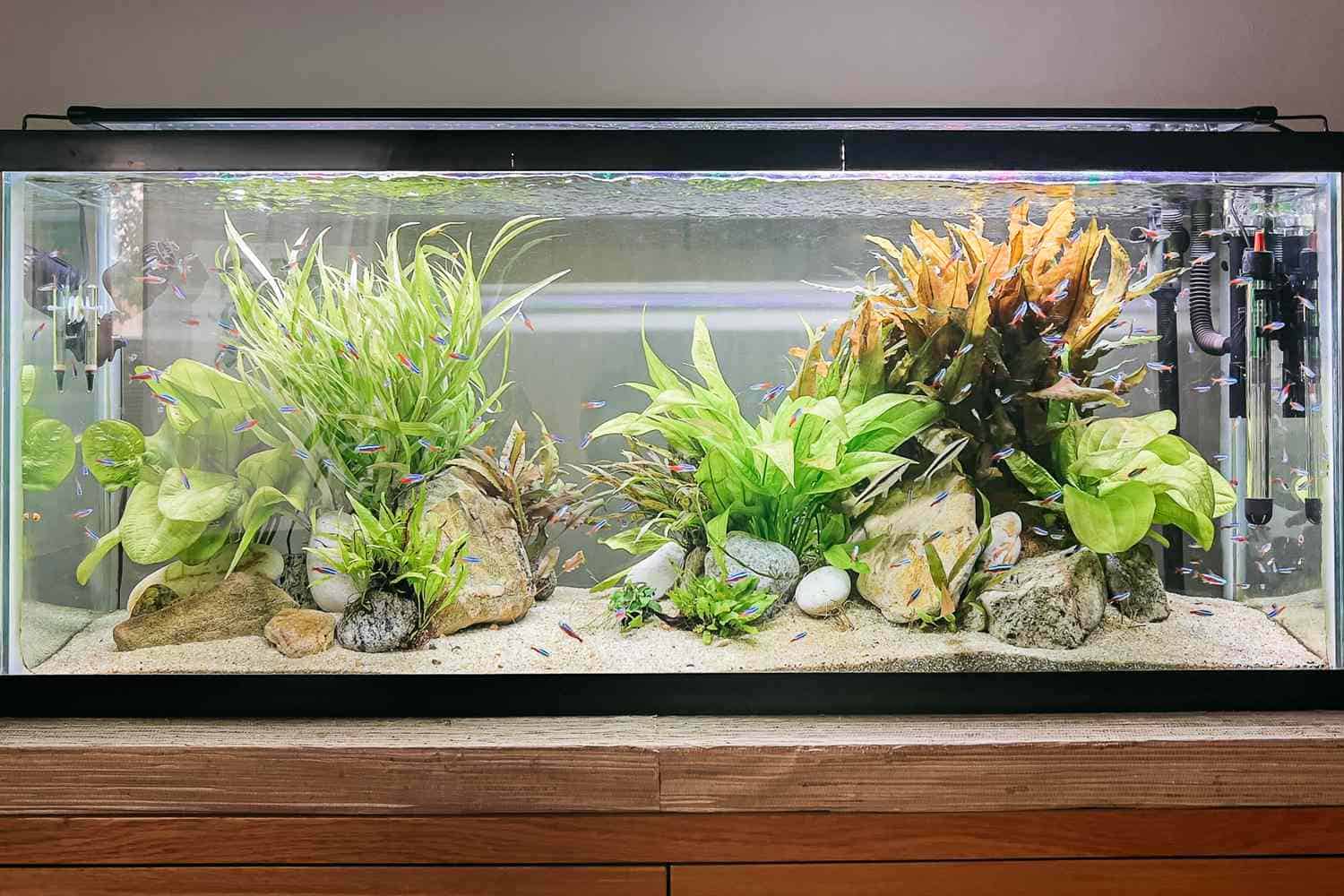Fish tanks have been a go-to for adding a little life to homes and offices, offering a mesmerizing peek into the underwater world. But with people paying more attention to energy use these days, it’s worth asking—how much electricity do they actually use?
We’re diving into what powers a fish tank, what affects energy consumption, and how you can keep your setup running efficiently without messing with your fish’s comfort.
How Much Electricity Does a Fish Tank Use?

Image Source: bbci.co.uk
Figuring out how much electricity your fish tank sucks up isn’t rocket science—it just takes a little math. Here’s how to break it down.
1. Identify the Components
First, make a list of everything plugged in. The lights, filter, heater, air pump—whatever is keeping your fish happy. Each of these uses power, and they all add up.
2. Determine the Wattage
Next, check how much electricity each one needs. The wattage should be on the label or in the manual. A heater might use 100 watts, a filter 15 watts, and an air pump just 5.
3. Determine Daily Usage
Now, think about how long each thing runs. Lights might be on for 8 hours, but a heater and filter are probably working around the clock.
4. Calculate Daily Energy Consumption
Time for some quick math. Multiply the wattage of each item by the hours it runs per day. If your LED lights are 20 watts and on for 8 hours, that’s 160 watt-hours. A heater at 100 watts running 24 hours a day? That’s 2400 watt-hours.
5. Convert to Kilowatt-Hours (kWh)
Since electric bills measure energy in kilowatt-hours, divide those numbers by 1,000. So, 160 watt-hours turns into 0.16 kilowatt-hours, and 2400 becomes 2.4.
6. Calculate Total Daily Energy Consumption
Add everything up, and you’ve got your total daily power use. If your filter, heater, lights, and air pump come to 3.04 kilowatt-hours per day, just multiply that by 30, and you’re looking at about 91 kilowatt-hours per month.
7. Estimate Monthly Energy Consumption
Multiply the total daily energy consumption by the number of days in a month to estimate the monthly energy usage of the fish tank. This will give you an approximate value of the electricity consumed over a typical month.
Let’s consider an example of how many watts a fish tank uses to illustrate the calculations:
Suppose you have a fish tank with the following components:
- Lighting system: LED lights with a total wattage of 20W.
- Filtration system: An efficient filter with a power consumption of 15W.
- Heating system: An aquarium heater with a wattage of 100W.
- Aeration device: An air pump with a power rating of 5W.
Considering that the lights are operated for 8 hours per day while the filtration system, heater, and air pump run continuously, we can calculate the energy consumption as follows:
- Lighting system: 20W x 8 hours = 160 Wh or 0.16 kilowatts per day.
- Filtration system: 15W x 24 hours = 360 Wh or 0.36 kilowatts per day.
- Heating system: 100W x 24 hours = 2400 Wh or 2.4 kilowatts per day.
- Aeration device: 5W x 24 hours = 120 Wh or 0.12 kilowatts per day.
Total daily energy consumption: 0.16 kWh + 0.36 kWh + 2.4 kWh + 0.12 kWh = 3.04 kilowatts per day.
Assuming a month with 30 days, the estimated monthly energy consumption would be approximately 3.04 kWh x 30 = 91.2 kWh.
How Much Will a Fish Tank Raise My Electric Bill?

Image Source: TheStatesman.com
How much your fish tank adds to your electric bill depends on a bunch of things—tank size, how efficient your equipment is, and how long everything runs each day. Since every setup is different, it’s tough to pin down an exact number, but here’s a general idea.
Most tanks with the usual gear—lights, a filter, a heater, and an air pump—use somewhere between 2 and 10 kilowatt-hours per day. That covers a range of sizes and equipment types, so your actual usage could fall anywhere in between.
If electricity costs about 12 cents per kilowatt-hour, then a fish tank might add anywhere from $7 to $36 to your monthly bill. That’s assuming it runs all month long, but your costs could be higher or lower depending on where you live and how energy-hungry your tank is.
For a more precise number, you’d have to do the math based on your exact equipment and how long it runs. The steps from earlier in this guide can help with that—checking wattage, calculating daily use, and multiplying by the number of days in a month.
If you really want to know for sure, a power meter is the way to go. Just plug your tank’s equipment into one, and you’ll see exactly how much energy it’s pulling. Your electric bill will tell the rest.
Factors Affecting Electricity Consumption of a Fish Tank

Image Source: aquariadise.com
1. Tank Size
The bigger the tank, the more power-hungry it gets. More water means bigger heaters, stronger filters, and brighter lights, all of which add to your energy bill.
2. Aquarium Lighting System
Your choice of lights makes a big difference. LEDs are the energy-efficient champs, while older fluorescent bulbs and metal halides use way more power. The longer your lights stay on, the more energy they eat up.
3. Filtration Systems
Filters keep the water clean, but they don’t all use the same amount of power. A small, efficient filter might barely make a dent in your bill, while high-powered UV filters and protein skimmers can add up fast.
4. Aquarium Heating Systems
If you’ve got a tropical setup, heating will likely be one of the biggest energy drains. The heater’s wattage, the room temperature, and how warm your fish need the water all play a role. If it’s cold where you live, expect to use even more energy to keep the tank at the right temperature.
5. Aeration Devices
Air pumps don’t use a ton of electricity, but if you’ve got multiple pumps or large air stones, it can add up. Choosing an energy-efficient pump can help keep things in check.
6. Other Equipment
Got powerheads, water pumps, or even a chiller? Every extra piece of equipment running in your tank adds to your energy use. Some are necessary, but others might not be worth the added cost.
7. Tank Cleaning and Maintenance
A clean tank runs more efficiently. If your filter is clogged or water circulation is poor, your equipment has to work harder, which means higher electricity use. Keeping everything in good shape helps keep energy costs down.
8. Tank Use and Livestock
A simple freshwater setup won’t use nearly as much power as a the best home aquarium loaded with coral, special lights, and extra filtration. The type of fish (or other creatures) you keep also affects what kind of equipment you need, which in turn impacts electricity use.
Energy-Efficient Practices to Save Electricity and Reduce Energy Consumption in Fish Tanks

Image Source: thespruce.com
1. LED Lighting
If you’re still using fluorescent bulbs or incandescent bulbs, your fish are basically living in the past. LED lights sip electricity instead of chugging it, last way longer, and don’t heat up your tank like a tiny sun. That means less stress on cooling systems and more money in your pocket.
2. Proper Sizing of Filtration Systems
If your filter is too weak, it’s overworked. If it’s too powerful, it’s wasting energy for no reason. Think of it like using a firehose to water a houseplant—it’s overkill. Find a filter that matches your tank’s size so you’re not wasting watts.
3. Timers for Lighting and Aeration
Your fish don’t need a 24/7 rave. Timers can turn lights and air pumps on and off at set times, making sure they’re only running when needed. Let your fish get some “nighttime” and save yourself some cash.
4. Efficient Heating Systems
A good heater with a built-in thermostat keeps things at the right temperature without constantly guzzling power. And if it’s already warm where you live, why are you even running the heater all the time? Let nature do some of the work!
5. Regular Maintenance
A dirty tank makes your filter work overtime, which means it’s using more energy than it should. Keep the water clean, rinse out the filter, and make sure everything’s running smoothly so your equipment doesn’t have to struggle.
Final Take
Fish tanks don’t have to be power-hungry money pits. The trick is implementing energy-efficient measures—get efficient equipment, don’t run things longer than needed, and keep up with maintenance. Do that, and you can enjoy your fish without feeling like they’re secretly running up your electric bill behind your back.














